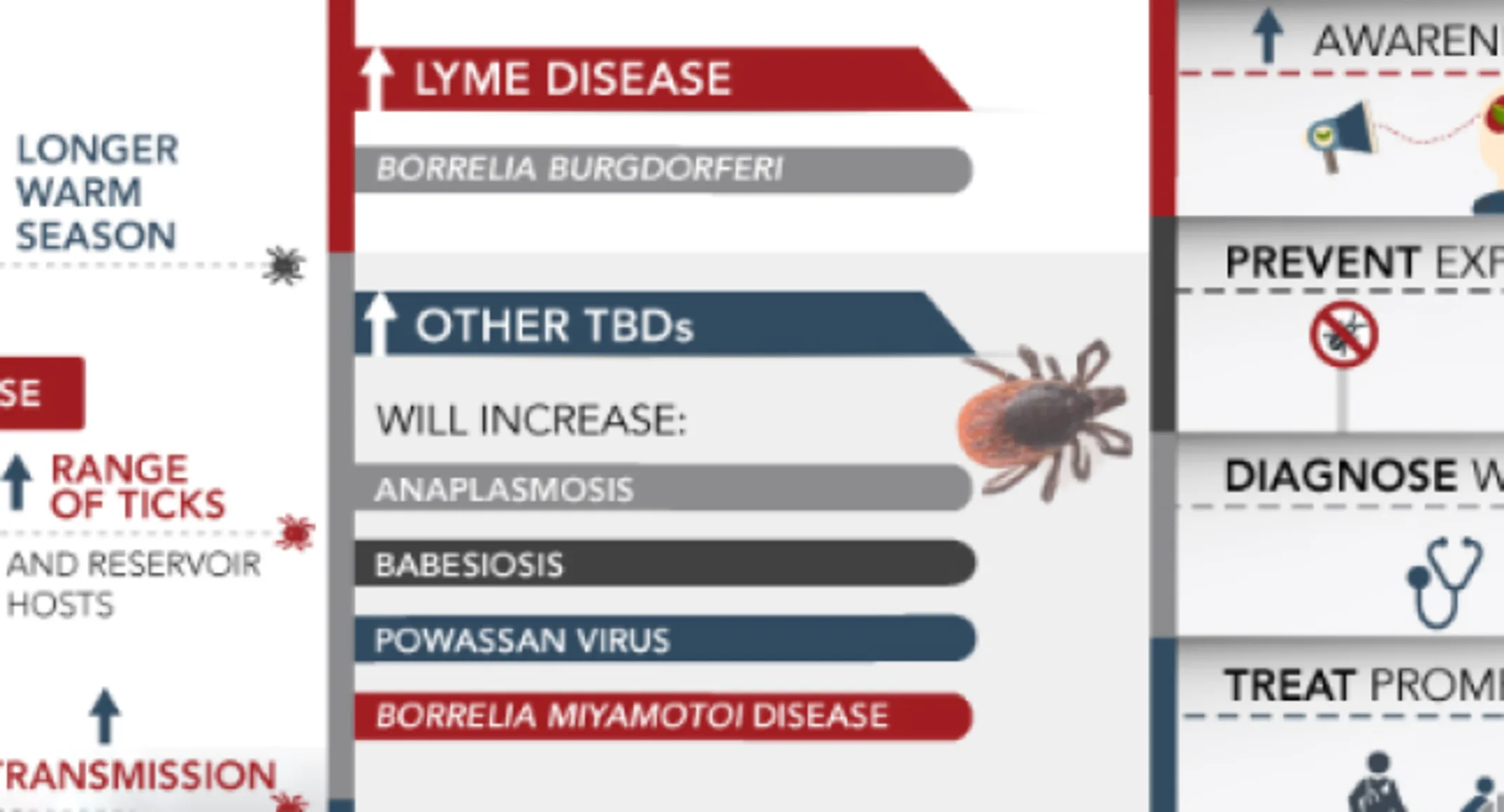Tick Increase and Heartworm Prevention Feature
Pet Safety

Your dog seems off. Instead of the happy bundle of energy that you engage with every day, there are obvious signs something is wrong. A limp, swollen joints, no desire to eat, or maybe a general lethargy that appears to be bordering on depression. It’s painful to witness and your heart breaks wondering what might be wrong.
Several conditions can cause those specific symptoms in your beloved pet. One is Lyme disease. Lyme disease, which can be difficult for a veterinarian to diagnose, is potentially fatal for dogs if left untreated. The good news is that death is a rare outcome because of our modern- day preventative programs to address parasites in animals. Diligence is becoming more important than ever given our changing environment. Ticks, the parasite that carries the bacterial agent Borrelia burgdorferi (which causes Lyme disease), are increasing their numbers in Canada. And not just the bushy, wooded areas where we typically expect to find them. They are also on the rise in urban centres, posing a risk to both companion animals and humans. The culprit for that increase? A warming environment. According to the Government of Canada website, “Climate warming and other environmental changes have contributed to the expansion of the range of several tick species into higher latitudes in North America. As temperatures increase in Canada, the environment becomes more suitable for ticks, and the season suitable for tick activity lengthens, so tick-borne diseases are likely to become more common in Canada.”
Ticks cannot jump onto an animal or human. They can’t fly either. They just lurk in grass and bushes, waiting for a warm body with tasty blood to brush up against the spot so they can climb
aboard. If successful, a tick needs to be attached to a host for 24 hours to infect them, assuming it is carrying Borrelia burgdorferi. To determine that, you must remove the tick and bring it in for testing. The City of Toronto has a thorough surveillance program for Blacklegged ticks, using a dragging method in both the spring and fall to collect ticks and identify their prevalence in specific areas. You can clearly see risky areas to avoid.
Removing ticks Wear gloves. Using tick twisters (the tool doesn’t compress the tick and therefore reduces the risk of it crushing and fluid running into the wound…available on Amazon), rotate the tick and pull up with steady, even pressure. When the tick is removed, wash the area on your pet and your hands. Dispose of it properly so it doesn’t creep back by flushing it down the toilet. Visit https://etick.ca/en for information on submitting ticks.
Prevention Being proactive is the key to keeping your dog (and cats) free from fleas and ticks. And the arrival of warm weather means it’s time to book a visit with your veterinarian to determine the best prevention plan for your pet. Here are some tips: – Invest in prescription oral tablets that can quickly kill fleas and ticks and have residual protection – Wash bedding regularly, keep your carpets clean and your yard tidy, especially mowing the lawn – Discuss the Lyme disease vaccine for your dogs with your veterinarian – Consider a spray or insect fogger (you and your pets have to leave while it’s in operation) – Note that not all products have the same effectiveness so get the right information from your vet
Don’t forget about heartworm Ticks are a big concern for pet owners as the months get warmer. But it’s also important to be conscious of heartworm disease. Like ticks, prevention programs have gone a long way to keeping heartworm numbers low in Canada. The federal government added another layer of protection with the ban on imported dogs last October. The intent of the ban was to better control a rise in rabies cases, though heartworm was also a risk associated with dogs arriving from other countries. Heartworm disease can kill dogs. Transmitted by mosquitoes, a bite can lead to the development of worms around the heart. Larvae travel through the infected dog’s bloodstream
to major vessels and arteries, maturing into adult worms. They stress the animal’s heart and weaken muscles, potentially causing the equivalent of human congestive heart failure. Any time the temperature reaches above 14 degrees Celsius, there is a risk. That’s the point heartworm larvae require to be infective. Like the increasing range of ticks, warming temperatures extend heartworm season, which usually begins in June but now goes all the way to November.
Signs and effects of heartworm in your pet 1) Coughing 2) Shortness of breath 3) Inability to exercise
Heartworm is easy to avoid. Simply visit your vet and set up a personal parasite prevention program for your animal. It can begin with an annual blood test to screen the dog for diseases, including Lyme Disease, Anaplasmosis (a disease spread by ticks), Ehrlichia (a bacteria also spread by ticks), and heartworm disease. Your veterinarian can also prescribe a monthly pill to prevent heartworm.
Visit https://www.petsandticks.com/canadian-pet-tick-survey for more information, including tick maps specific to your area.
